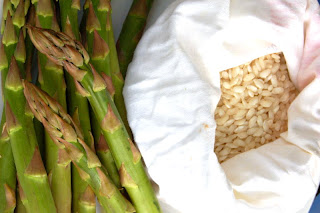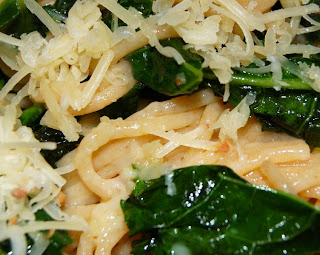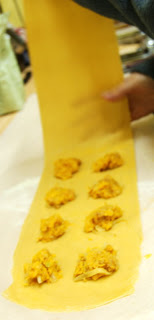
You can surely see that risotto is one of my pet loves..... luscious, versatile and gloriously filling. It is that great combination of the freshest ingredients and sublime rice. This is one of my favourites. But only have when the asparagus is in season....
Large bundle of asparagus
Onion (finely chopped)
Vegetable stock
Risotto rice (try to get the best you can)
Glass of white
Parmesan cheese
A good grind of pepper
(serves 2)
- Taking a large saucepan fry the chopped onion gently for about 5 to 10 minutes.
- Take the asparagus and cut the end off to clean it up. Depending on the asparagus I take the head it and chop off and keep aside... (if you have some thick stalks of the stuff just cut the top 3-4 cms off). I then use the thicker and tougher ends and chop quite finely.
- Take the chopped asparagus and add to the onions. Cook on for 4 or 5 minutes.
- In a separate pan heat up your vegetable stock.... I tend to use one stock cube and about a 500 ml of water... this is approximate - you will have to experiment.
- Add your risotto rice to the asparagus and onion and stir through.
- Start adding your vegetable stock to the rice a little at a time stirring constantly. Let the stock reduce down and when the mixture begins to stick a little to the bottom add more stock gradually.
- Keep on adding the stock ladle by ladle and stirring constantly. After about 15 minutes or maybe more - risotto is not an exact science - your rice should be reaching the correct consistency - the grains or rice should be soft. Add the asparagus tops and cook for another 5 minutes.
- Give a good stir and add the glass of wine.
- Keep stirring for about 3 minutes.
- If you are using cheese grate a good handful and stir into the risotto with a good grind of pepper.
- Plate up and decorate with a little grated cheese if you are using that. This is a great late spring dish.

















